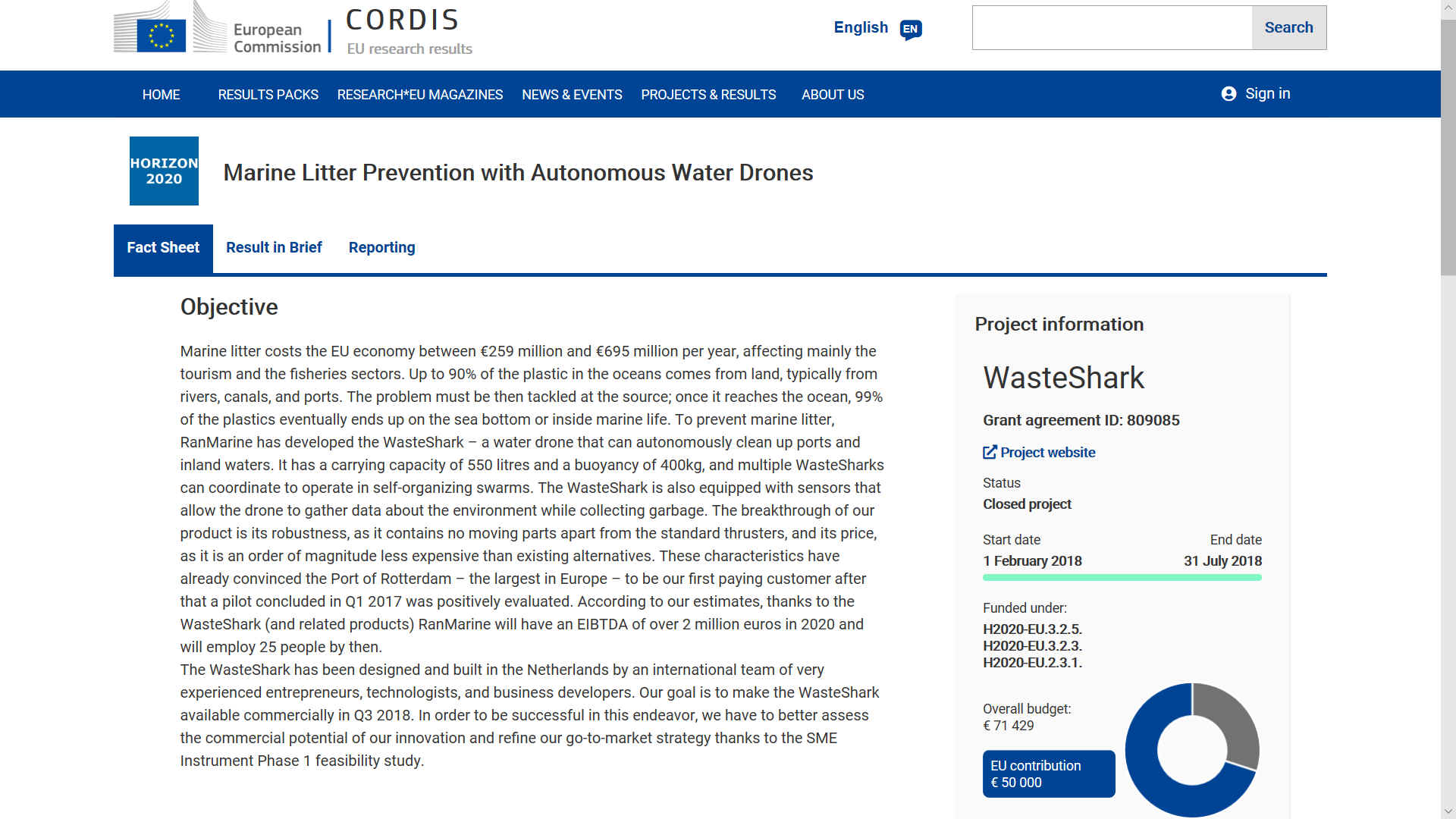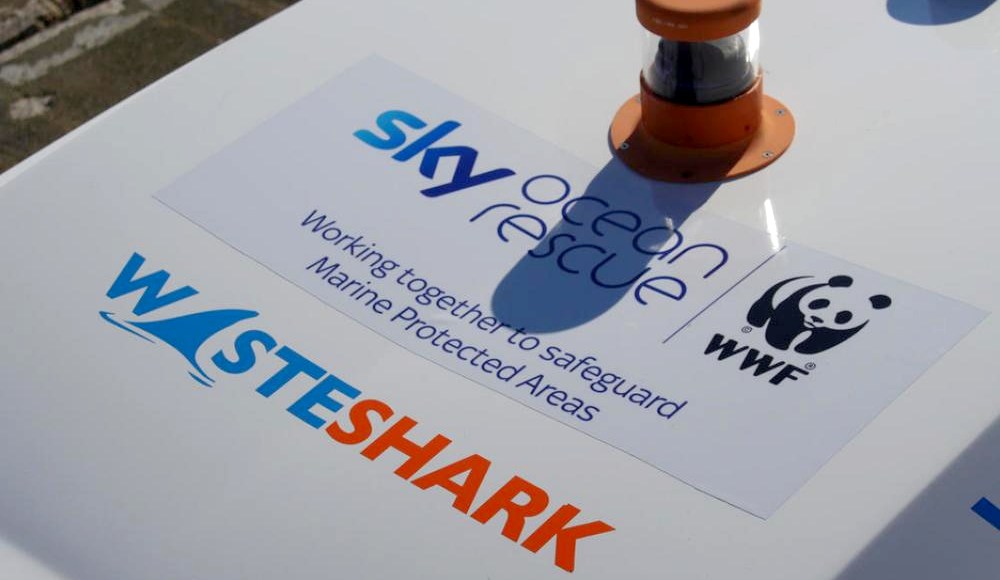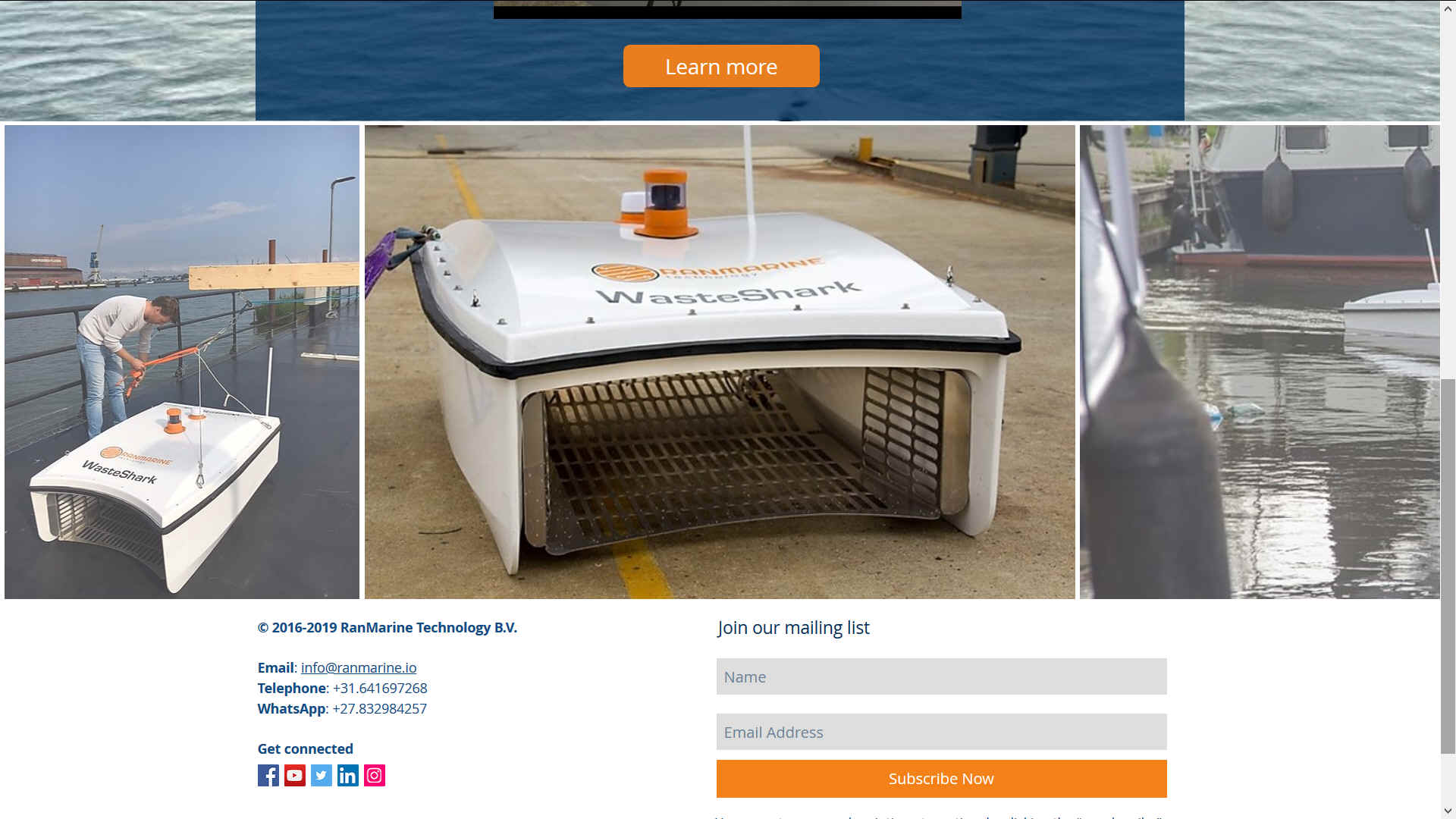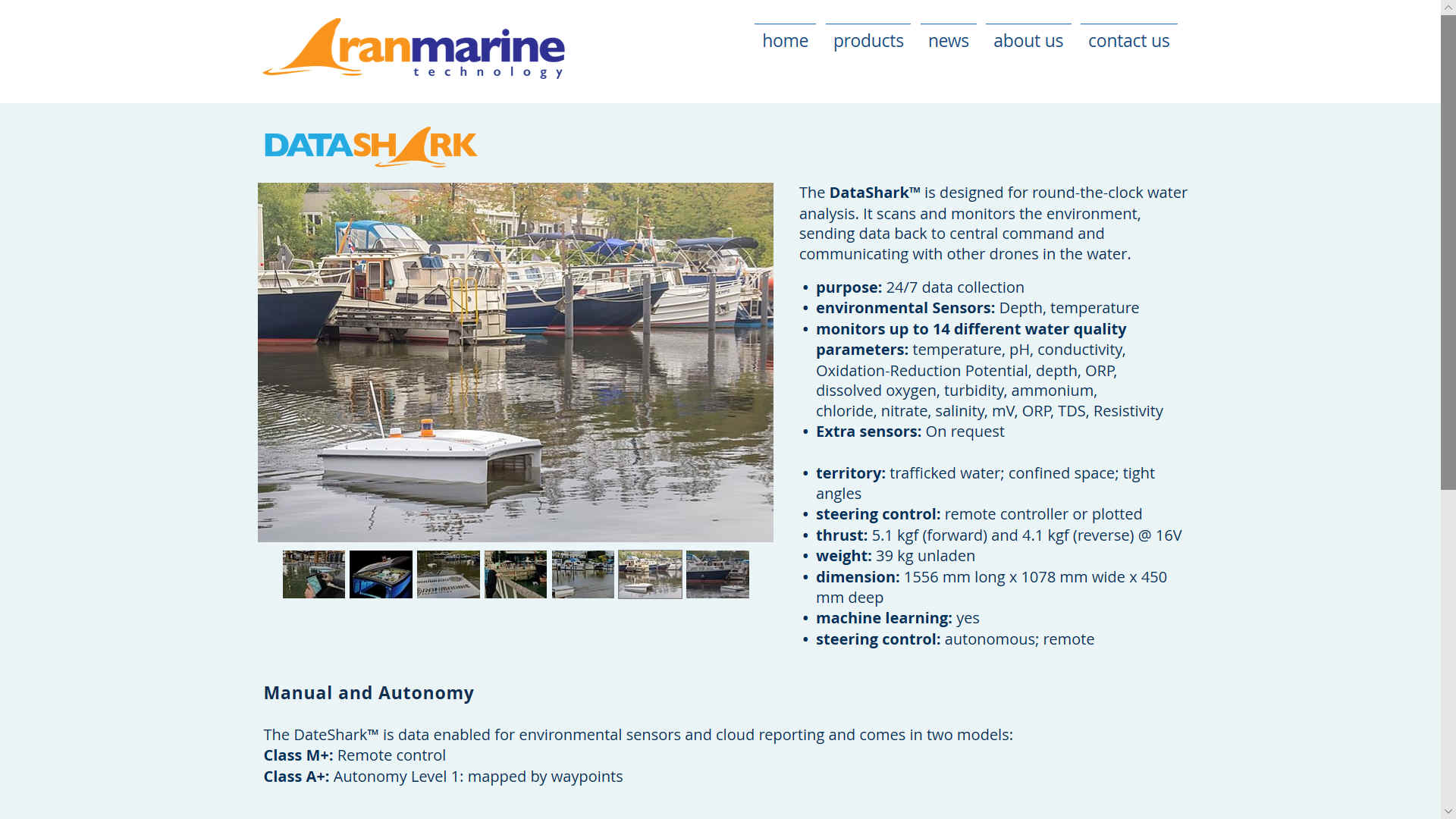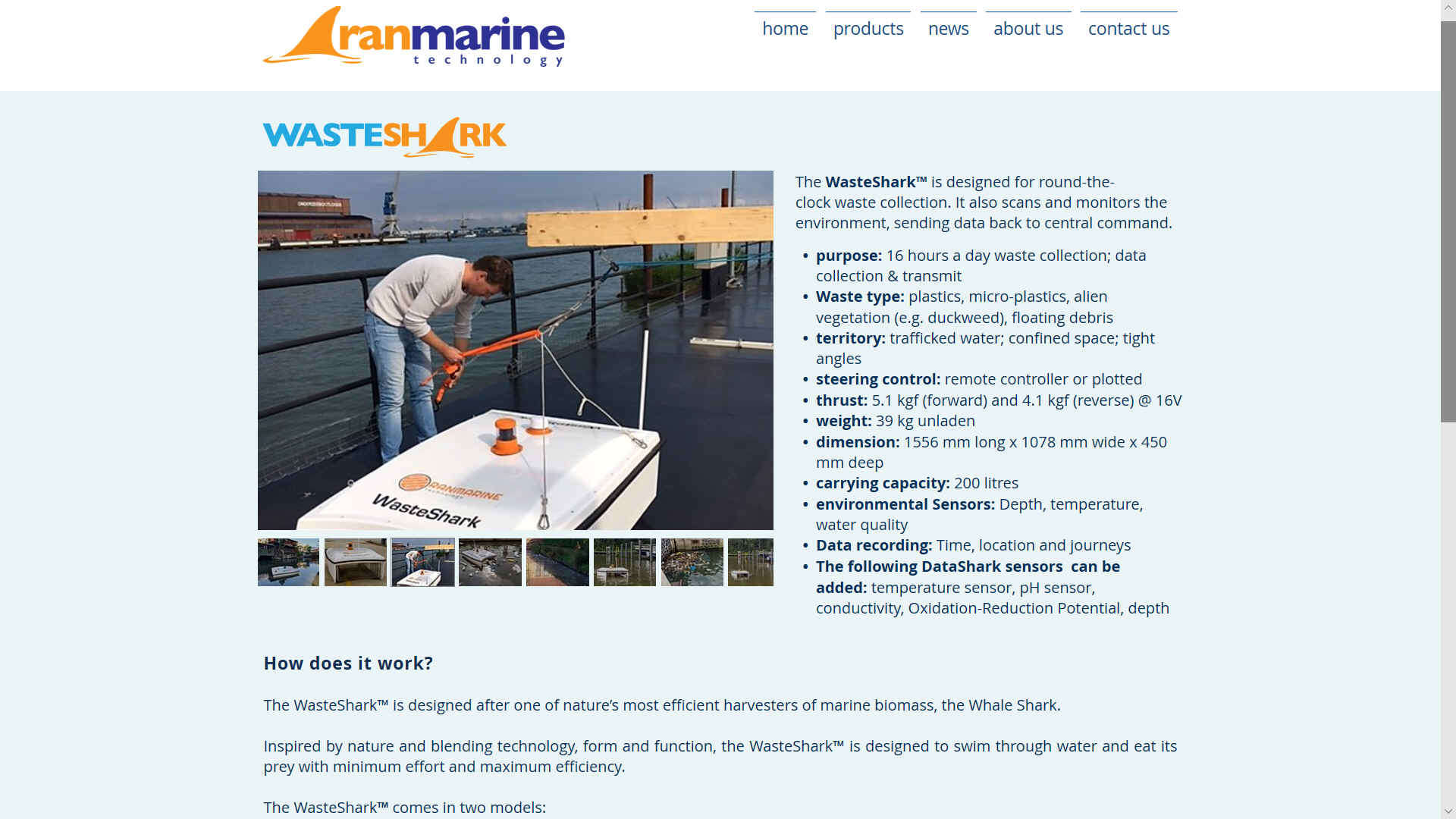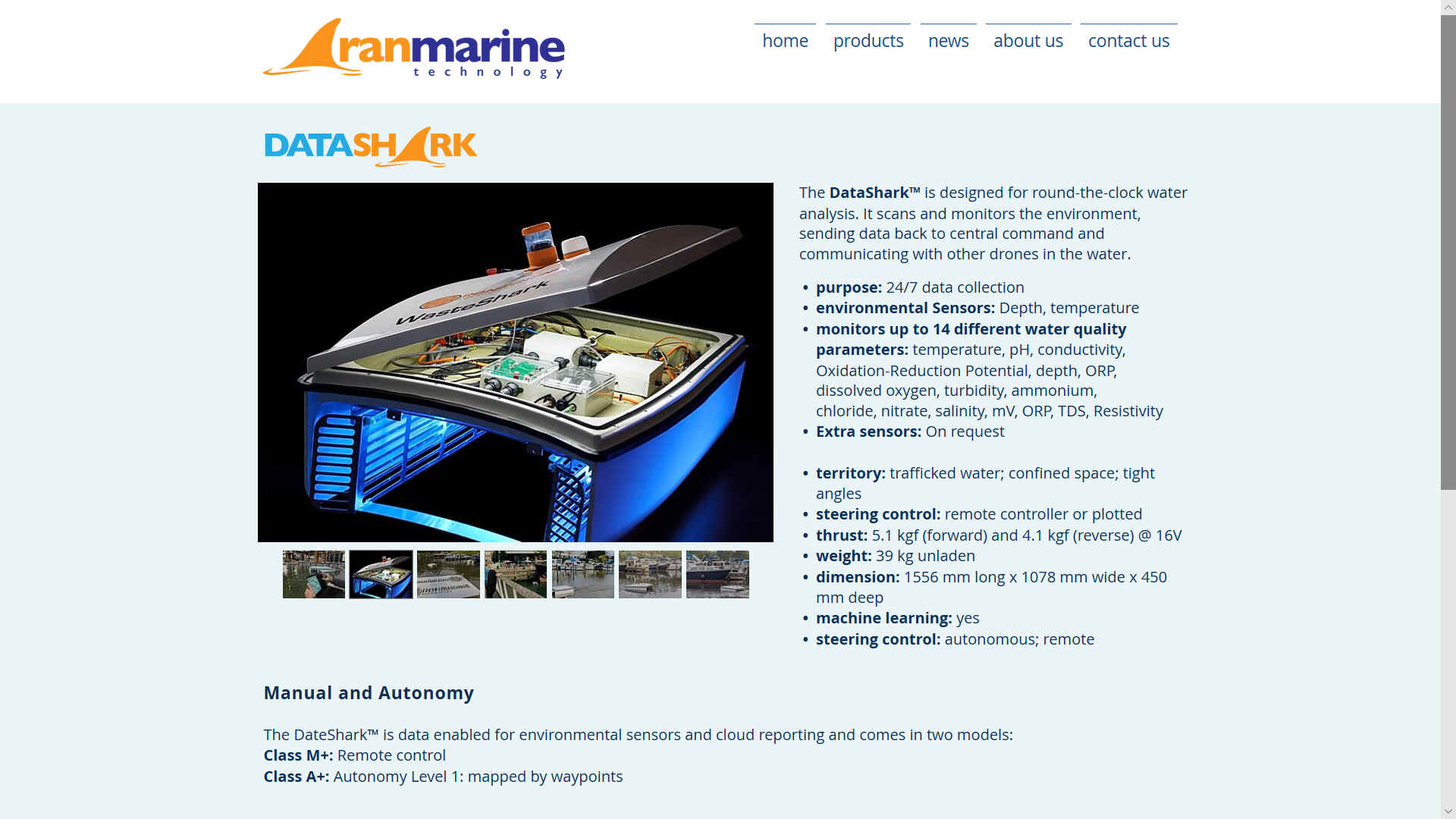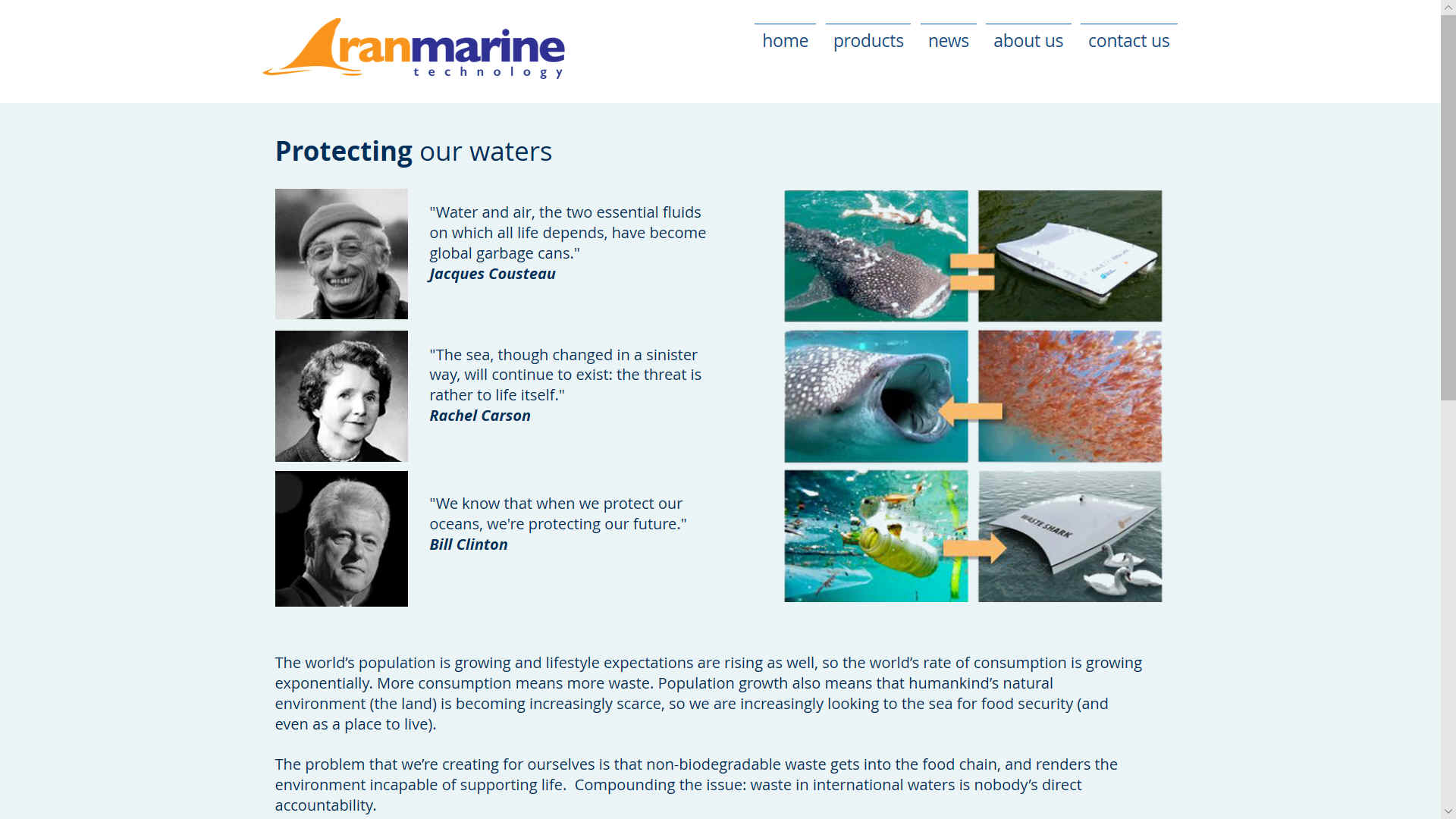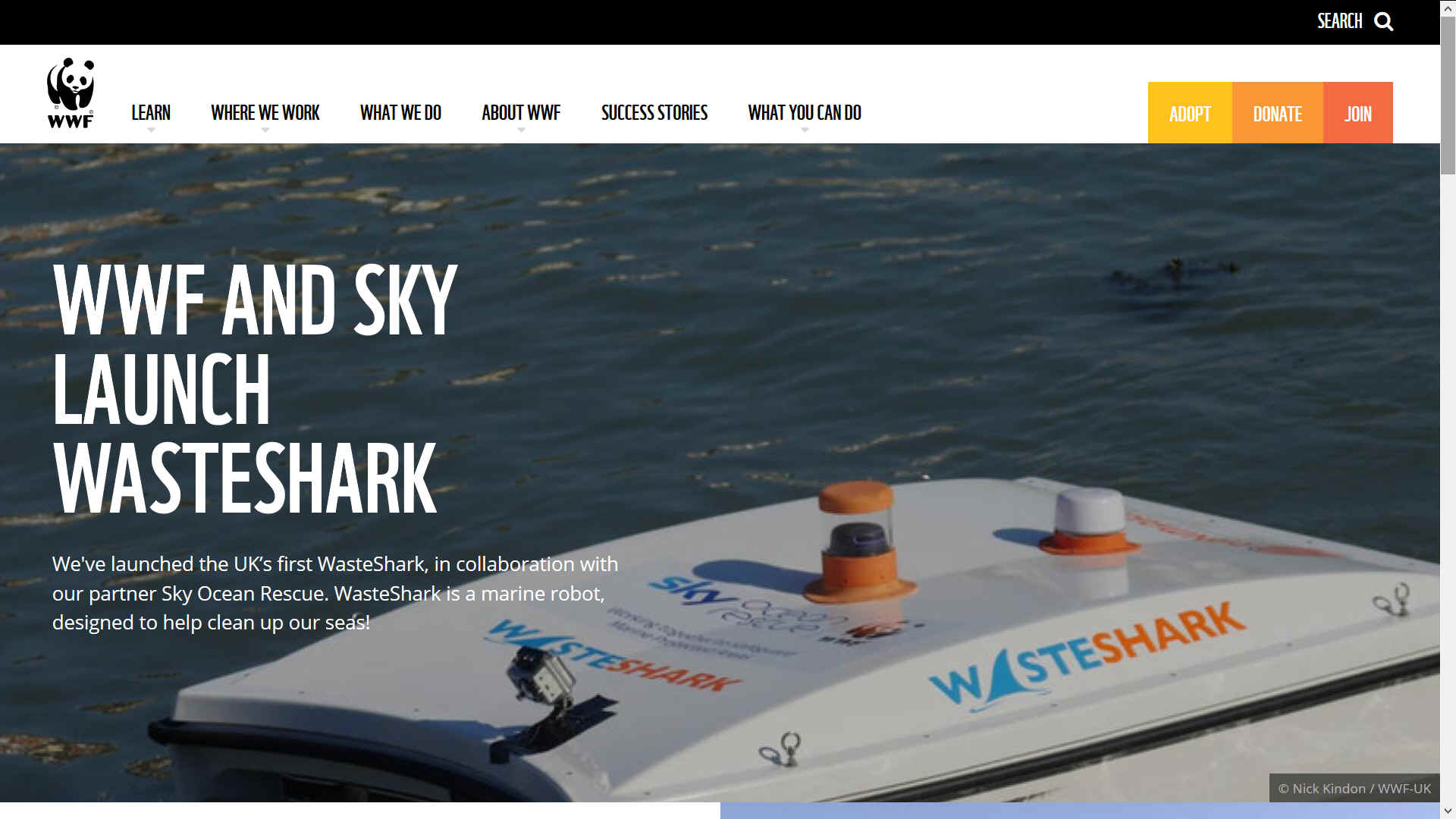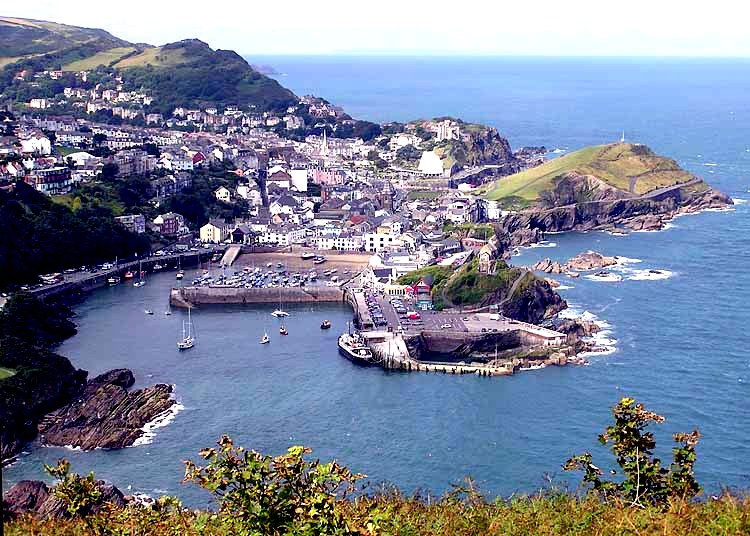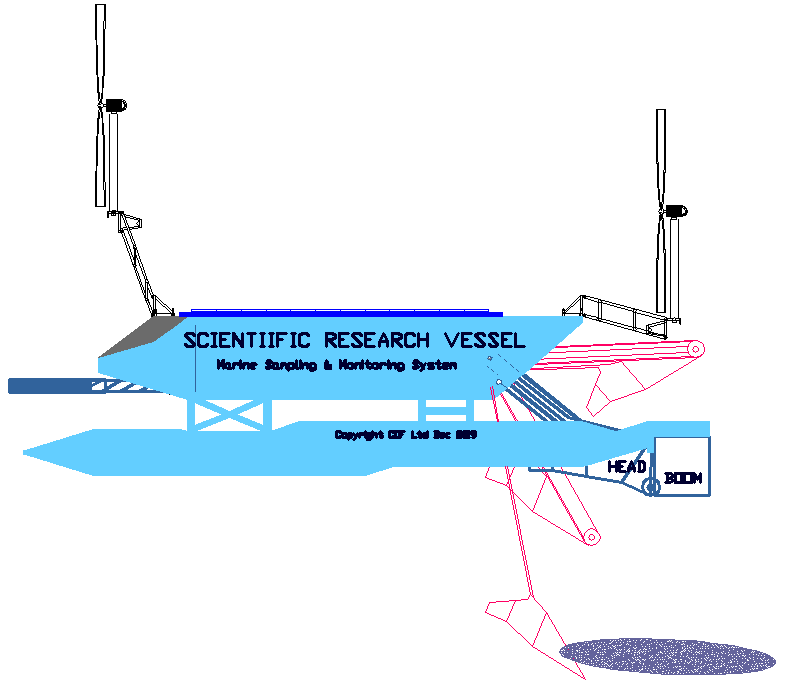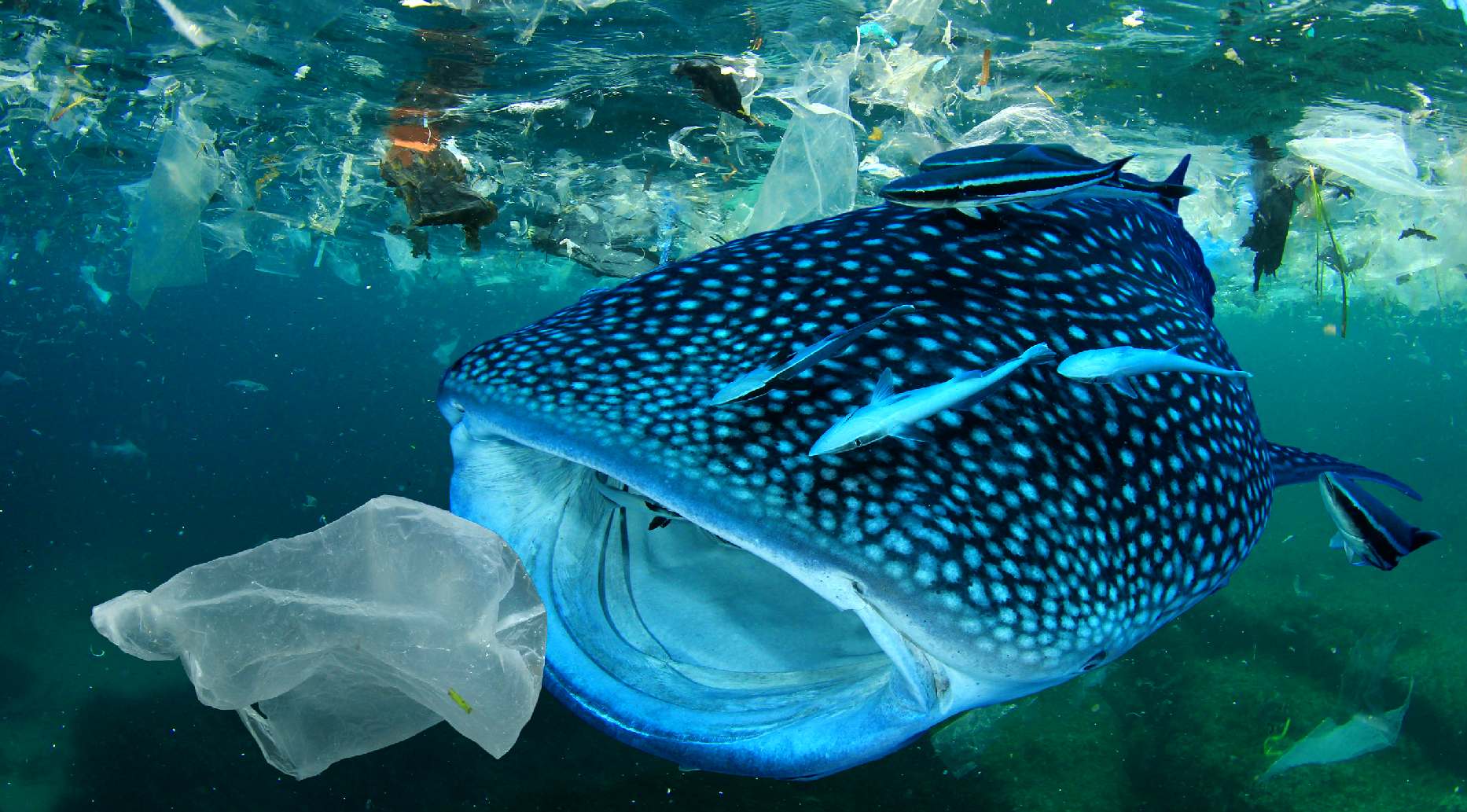|
WASTE SHARK - MARINE LITTER DRONES
HOME | GROWTH | CLEANUP | CLIMATE | GYRES | PLASTICS | POLYTICS Please use our A-Z INDEX to navigate this site, where page links may lead to other sites
| |
|
AUTONOMOUS
WATER DRONES - Now every city in the world can have a self-organising swarm of autonomous robots, swimming round the clock to monitor and maintain
water health.
Marine litter consists of items that have been made or used by people and deliberately discarded or unintentionally lost into the sea and on beaches, including such materials transported into the marine environment from land by rivers, draining or sewage systems or winds (Marine Strategy Framework Directive - Task Group 10, Report Marine litter, JRC/IFREMER/ICES, April 2010). Marine litter can be larger pieces of plastics, e.g. from bottles, bags or fishing gear or degraded to micro-particles.
Marine litter costs the EU economy between €259 million and €695 million per year, affecting mainly the tourism and the fisheries sectors. Up to 90% of the plastic in the oceans comes from land, typically from rivers, canals, and ports, as it is carried to the seas and oceans.
Once is the oceans, plastic congregates in giant swirling masses called gyres, where due to the effect of sunlight and waves, it is broken down into smaller pieces, until is becomes microplastic.
The problem must be then tackled at the source; once litter reaches the ocean, 99% of the plastics eventually ends up on the sea bottom or inside marine life. To prevent marine litter, RanMarine has developed the WasteShark – a water drone that can autonomously clean up ports and inland waters. It has a carrying capacity of 550 litres and a buoyancy of 400kg, and multiple WasteSharks can coordinate to operate in self-organizing swarms.
The WasteShark is also equipped with sensors that allow the drone to gather data about the environment while collecting garbage.
The breakthrough of the product is its robustness, as it contains no moving parts apart from the standard thrusters, and its price, as it is an order of magnitude less expensive than existing alternatives.
These characteristics have already convinced the Port of Rotterdam – the largest in Europe – to be our first paying customer after that a pilot concluded in Q1 2017 was positively evaluated. According to our estimates, thanks to the WasteShark (and related products) RanMarine will have an EIBTDA of over 2 million euros in 2020 and will employ 25 people by then.
The WasteShark has been designed and built in the Netherlands by an international team of very experienced entrepreneurs, technologists, and business developers. Our goal is to make the WasteShark available commercially in Q3 2018. In order to be successful in this endeavor, we have to better assess the commercial potential of our innovation and refine our go-to-market strategy thanks to the SME Instrument Phase 1 feasibility study.
The aim is to increase the impact of Union seas and oceans on society and economic growth through the sustainable exploitation of marine resources as well as the use of different sources of marine energy and the wide range of different uses that is made of the seas.
Activities shall focus on cross-cutting marine and maritime scientific and technological challenges with a view to unlocking the potential of seas and oceans across the range of marine and maritime industries, while protecting the environment and adapting to climate change.
A strategic coordinated approach for marine and maritime research across all challenges and priorities of Horizon 2020 will also support the implementation of relevant Union policies to help deliver key blue growth objectives.
DATA
SHARK
purpose: 24/7 data collection
Eight million tonnes of plastic are dumped in the oceans each year, with catastrophic consequences for wildlife. 90% of the world’s sea birds have fragments of plastic in their stomachs, while up to 80% of mussels taken from a number of British beaches were found to contain microplastics.
SPECIFICATIONS
The WasteShark™ is designed for round-the-clock waste collection. It also scans and monitors the environment, sending data back to central command.
The compact vessel can roam for up to eight hours on one charge. It's programmed with
GPS points to ensure that it covers hotspots where waste gathers, and its path can be programmed and monitored remotely. Along with removing waste, the WasteShark can collect important data about the marine environment.
The WasteShark™ comes in two models:
AUTONOMY - The Waste and Data sharks can be either manually operated as drones, or operate from mapped waypoints when it executes the navigation program - bit like an autopilot.
CONTACTS
FACTS & FIGURES
The WasteShark can roam for up to eight hours on one charge. It's programmed with GPS points to ensure that it covers hotspots where waste gathers, and its path can be programmed and monitored remotely. Along with removing waste, the WasteShark can collect important data about the marine environment.
PARTNERSHIP
- WWF and Sky Ocean Rescue have launched an autonomous marine robot in north Devon to help clear Ilfracombe harbour of waste. The WasteShark® will be roaming through distances of up to 5km of water, capturing plastics, microplastics, oils and other pollutants. If used five days a week the WasteShark can collect in excess of 15 tonnes of waste a year, with the plastic recycled to make products.
From 2001 there was an economic regeneration programme led by the Ilfracombe & District Community Alliance MCTI, a community interest company designed to encourage social entrepreneurship. After widespread community consultation this programme developed a community economic strategy for the next twenty years published in 2005. The town council working with and North Devon District Council is formulating plans for the town's economic and physical structures. Proposed developments are: the enhancement of the harbour area; A large extension (500 dwellings) to the town on high ground to the south. There is long term development of the derelict bus station site based on plans developed by Terence O'Rourke; and the creation of better youth support and recreation facilities at the Larkstone eastern side of the harbour area.
PERSISTENT MONITORING - Machines like the Pilot SeaVax could provide sufficient energy to sample the marine environment continuously in volume, also able to transport the sensors and sampling equipment anywhere in the world without using fossil fuels. The head of this machine can be raised out of the water during transit, and lowered to 8 meters to sample microplastics near or on the seafloor or riverbeds - example positions shown in red. It should be possible to design a head to travel to greater depths, but this will require additional R&D over and above that to achieve what is shown in principle.
NOTE: At the moment this is just a concept, without appropriate levels of funding for research and then for development, ZEV research vessels like this will never become a reality. It would be a mistake to think that with a drawing like that above, that the research to make it possible has already been done.
LINKS & REFERENCE
http://www.marlisco.eu/ https://www.marinelittersolutions.com/projects/marine-litter-marlisco/ http://ec.europa.eu/environment/marine/pdf/9-Task-Group-10.pdf http://www.marine-litter-conference-berlin.info/userfiles/file/Issue%20Paper_Final%20Version.pdf http://www.sciencemag.org/content/347/6223/768.abstract http://www.marelitt.eu/ https://www.wwf.org.uk/updates/wwf-and-sky-launch-wasteshark-marine-robot https://cordis.europa.eu/project/id/809085
WHAT DRIVES US - It is pictures like this whale shark swimming in garbage that it is about to ingest that makes our blood boil. What are we doing, letting a situation like this develop? The fish eat the plastic and we eat the toxic fish. We are slowly poisoning ourselves and our world.
|
|
ABS - BIOMAGNIFICATION - CANCER - CARRIER BAGS - COTTON BUDS - DDT - FISHING NETS - HEAVY METALS - MARINE LITTER - MICROBEADS MICRO PLASTICS - NYLON - OCEAN GYRES - OCEAN WASTE - PACKAGING - PCBS - PET - PETROLEUM - PLASTIC - PLASTICS - POLYCARBONATE POLYOLEFINS - POLYPROPYLENE - POLYSTYRENE - POLYTHENE - POPS - PVC - SHOES - SINGLE USE - SOUP - STRAWS - WATER
Please use our A-Z INDEX to navigate this site, where page links may lead to other sites
|
|
|
This website is provided on a free basis as a public information service. copyright © Cleaner Oceans Foundation Ltd (COFL) (Company No: 4674774) 2019. Solar Studios, BN271RF, United Kingdom. COFL is a company without share capital.
|
|
